¿Do you know who Saint Sebastian was?
Roman soldier and martyr
His feast day is January 20
Sebastián was the son of a noble family, native of Milan (263). He was the leader of the first court of the Praetorian sentries wherein he was respected by all and well-esteemed by the Emperor, who didn’t know that he was a Christian.
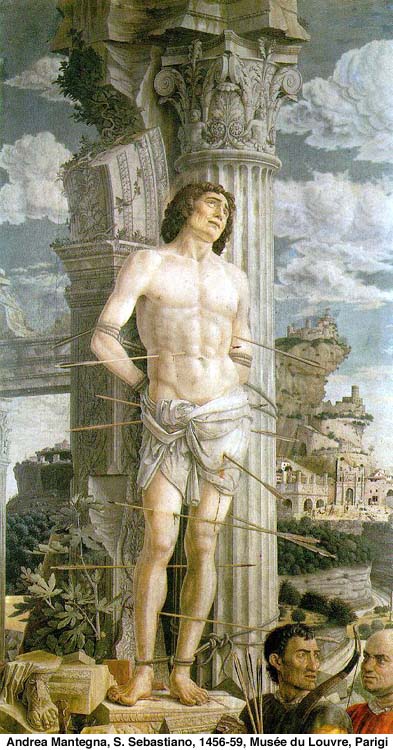 |
|||
|
|||
He complied with the military code, but he didn’t participate in the idolatrous practices. Like a good Christian, he not only did apostolate among his companions but also visited and encouraged those Christians who were imprisoned. It was at the time when two young Christians were incarcerated, Marcus and Marcellinus when Sebastian started to get noticed publicly as a Christian.
The two young Christians were arrested and were given a period of thirty days to renounce their faith in God. Upon knowing this fact, Sebastian went straight down to the prison cell where the two were in order to encourage and inspire them to be strong in their faith. From that moment on, the imprisonment of the two young Christians paved way for many conversions, and as a terrible consequence, also many martyrdoms.
Owing to all this, the Pope Saint Caius named Sebastian defender of the Church. However, the Emperor Diocletian also found out that Sebastian was a Christian and ordered for his arrest. Sebastian was captured in the moment in which he was burying the other martyrs, known as the “Four Holy Crowned Ones”. He was brought to Diocletian who told him: “I have always had you as one of the best in my palace and you have worked against me at my back, insulting the gods.”
St. Sebastian was not shaken by these words and instead reaffirmed his faith in Jesus Christ. The penalty given by the Emperor was that Sebastian be tied up and “covered” with arrows targeted at specific areas of the body, which when shot would not cause him to die right away. Hence, the emperor wanted him to suffer immensely and die slowly by subsequent blood loss brought about by the arrow blows.
The soldiers, carrying out the orders of the Emperor, brought him to the stadium, stripped him off his clothes, and tied him to a tree and started shooting at him in what seemed to be a rain of arrows. When they finished their task and saw that Sebastian was at a point of dying, they left the ailing body of the Saint destroyed by the numerous shots. However, his friends who were waiting from a distance then ran to the mutilated body, and upon seeing him still alive albeit barely, brought Sebastian to a house of a noble Roman Christian named Irene, who took care of him in secret. She treated the wounds of Sebastian until he eventually recovered.
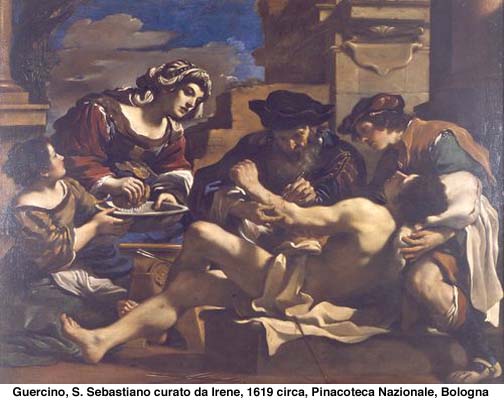 |
|||
|
|||
Upon his recovery, Sebastian was advised by his friends to flee Rome, but the Saint refused to comply with holy obstinacy, as testimony of his love for Christ. Thus, he went back and presented himself before the Emperor, who thought all along that he was already dead.
Sebastian took advantage of this moment to show protest with renewed strength and ardor against the Emperor and his beliefs. Maximianus ordered that Sebastian be flogged to death (year 340), and this time, the soldiers made sure that they fulfill the said mandate.
The lifeless body of St. Sebastian was retrieved by the faithful Christians and was later buried in an underground cemetery in the Appian Way, which now bears the name of the Catacomb of Saint Sebastian.
However, it is written in the Depositio Martyrum that the remains of St. Sebastian are instead buried in the cemetery of Ad Catacumbas.
In addition, the Carthaginian Calendars and the Gelasian and Gregorian Sacramentaries show devotion to St. Sebastian, as well as diverse itineraries. More particularly, the Jeromian Calendar specifies most the place of his sepulchre: in an underground gallery, next to the memory of the apostles Peter and Paul. During the great plague in Rome (680), his particular protection was invoked and ever since, the universal Church has seen in him the protector against the plague and in general has considered him as one of the Great Defenders of the Church.
The influence of St. Sebastian as an icon is vast. The oldest representation of the Saint dates back to the fifth century, discoverd in the Crypt of Saint Cecilia, in the Catacomb of Saint Calixtus. Further, during the Renaissance, numerous artists portrayed him as a soldier, commonly half-naked tied to a tree and tortured by multiple arrows. He is also known as the Christian Apollo for the numerous works of art wherein he is portrayed.
Saint Ambrose, from the fourth century, gives us a testimony about St. Sebastian: “Let’s take advantage of the example given by the martyr Saint Sebastian, whose feast day we celebrate today. He was a native of Milan and marched to Rome in a time in which the faith suffered tremendous persecution. He died there, that is, there he was crowned”.

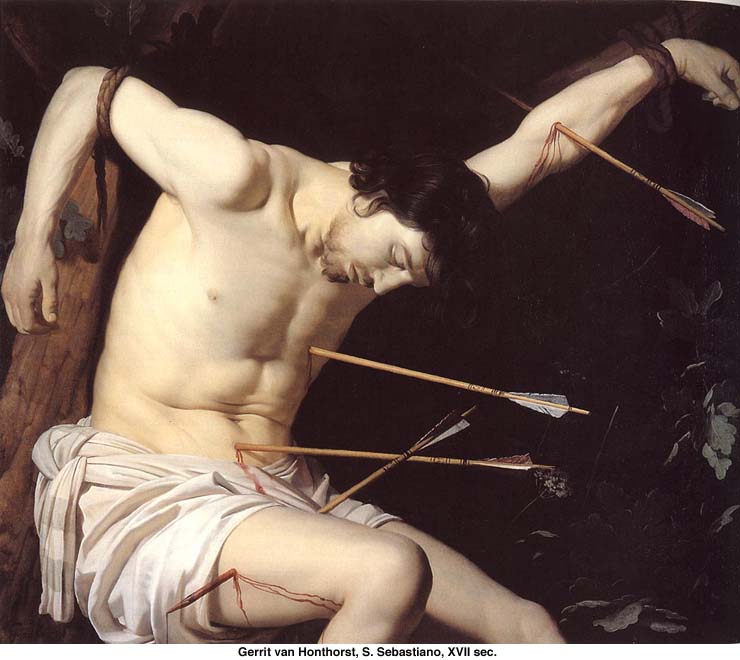

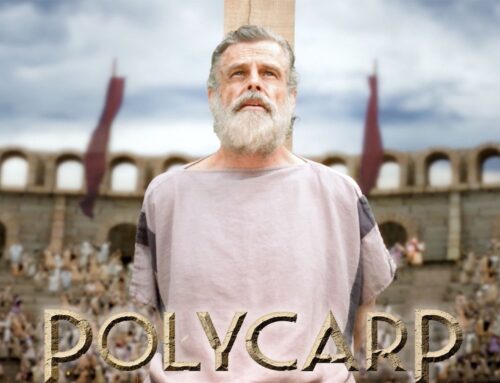
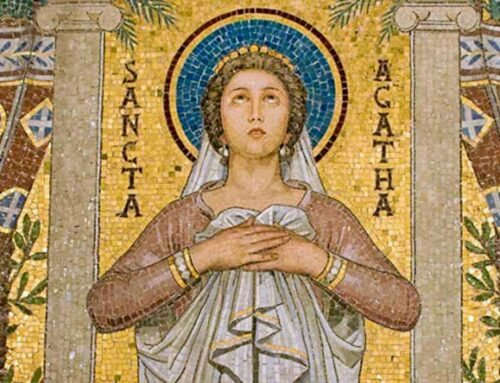
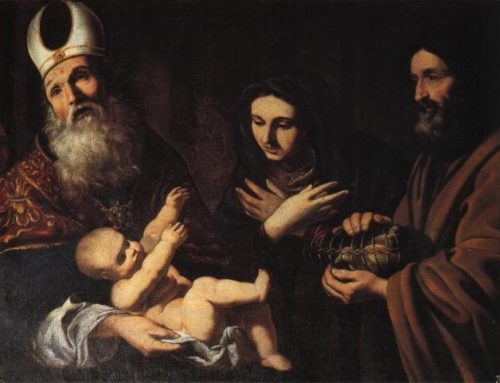
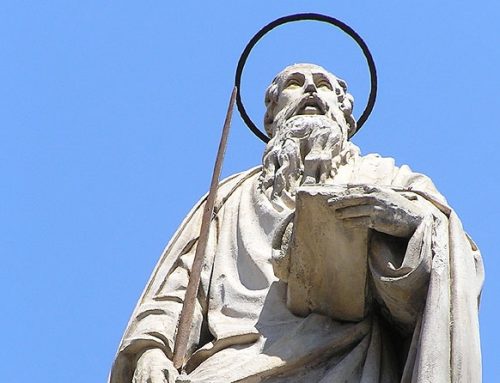
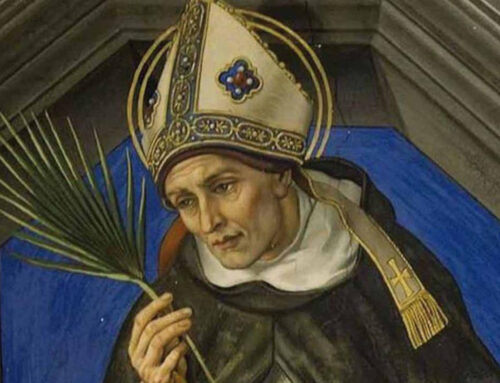
Leave A Comment
You must be logged in to post a comment.